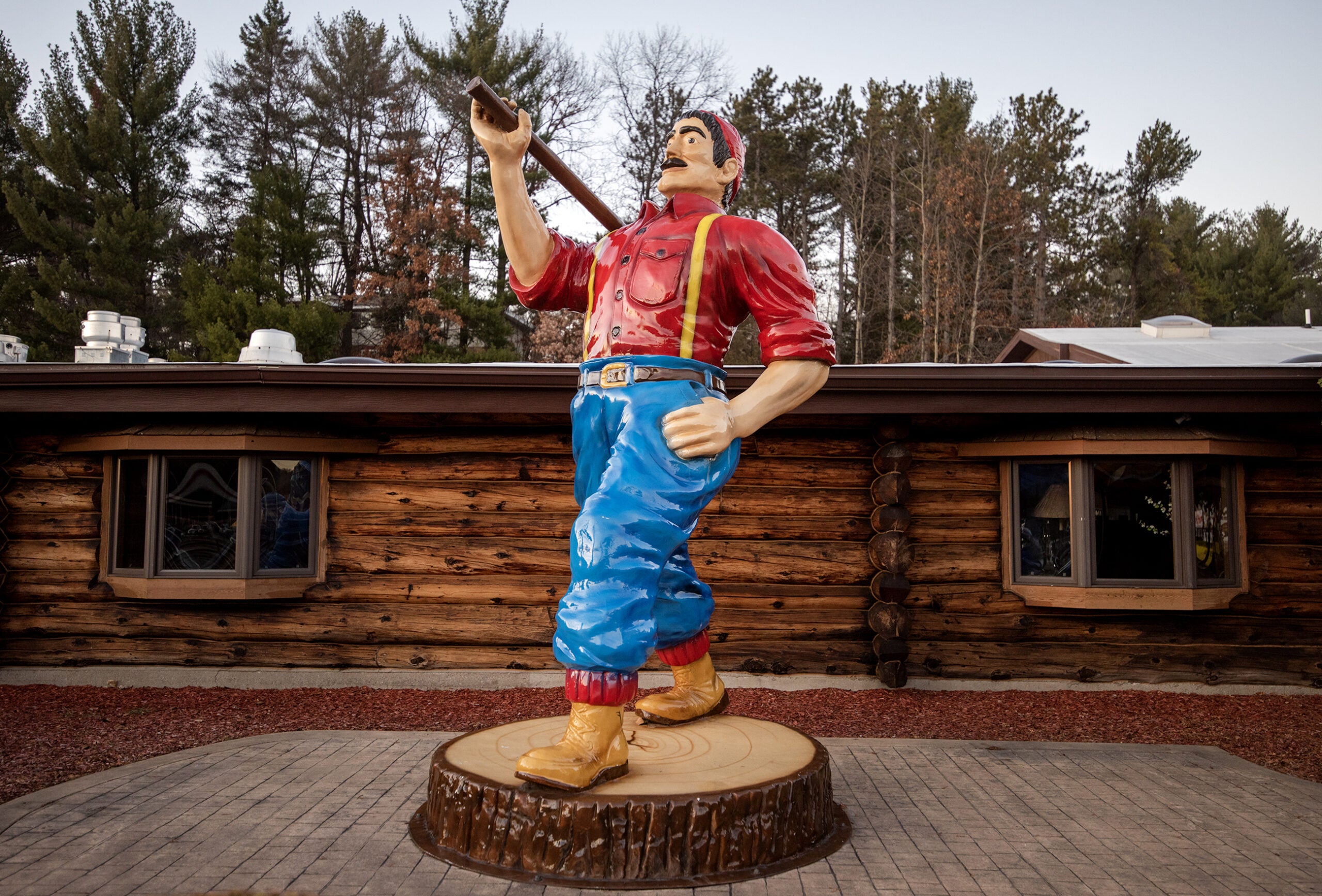It’s famed landscape photographer H.H. Bennett’s birthday this week. In the above candid, Bennett is touching up or writing on a photo beside a table with a stack of his work. It’s likely a rare moment of rest for the man who trekked all over the Wisconsin Dells photographing its rugged landscape, sandstone formations, and people. His images drew thousands of visitors to this stretch of the Wisconsin River.
If Schlitz is the beer that made Milwaukee famous, H.H. Bennett is the man who made the Wisconsin Dells famous.
Born in Canada on Jan. 15, 1843, Henry Hamilton Bennett came with father and uncle to Kilbourn City — today’s Wisconsin Dells — in 1857. He worked as a carpenter before enlisting in the 12th Wisconsin Infantry during the Civil War. But an injury caused by the accidental discharge of his gun crippled his right hand and ended his time in the military and his career as a carpenter. The accidental discharge of his gun severely wounded his right hand and ended his time in the military and his career in carpentry.
Stay informed on the latest news
Sign up for WPR’s email newsletter.
In 1865, Bennett purchased a tintype portrait studio with his brother George in 1865. The market for portraits was limited, though, so George soon left the business and Wisconsin. But Bennett kept on, pursuing the landscape portraits that he loved. He once remarked, “It is easier to pose nature and less trouble to please.”
He also found a use for his carpentry skills. Bennett built a portable darkroom that he carried with him around the region. He used a camera he built himself. He also invented and built a revolving solar printing house, a print-washing rack, and a stop-action shutter that made his most famous photo possible: his son Ashley’s 1886 leap at Stand Rock.
Many people encountered Bennett’s breathtaking images on stereoscopic cards. The cards presented two separate offset images to the left and right eye. Placed in a viewer known as a stereoscope, the images combine in the brain to give the perception of a three-dimensional scene. These cards allowed armchair travelers instant transport to Wisconsin and helped promote the area as a tourist destination.
Wisconsin Public Radio, © Copyright 2024, Board of Regents of the University of Wisconsin System and Wisconsin Educational Communications Board.


